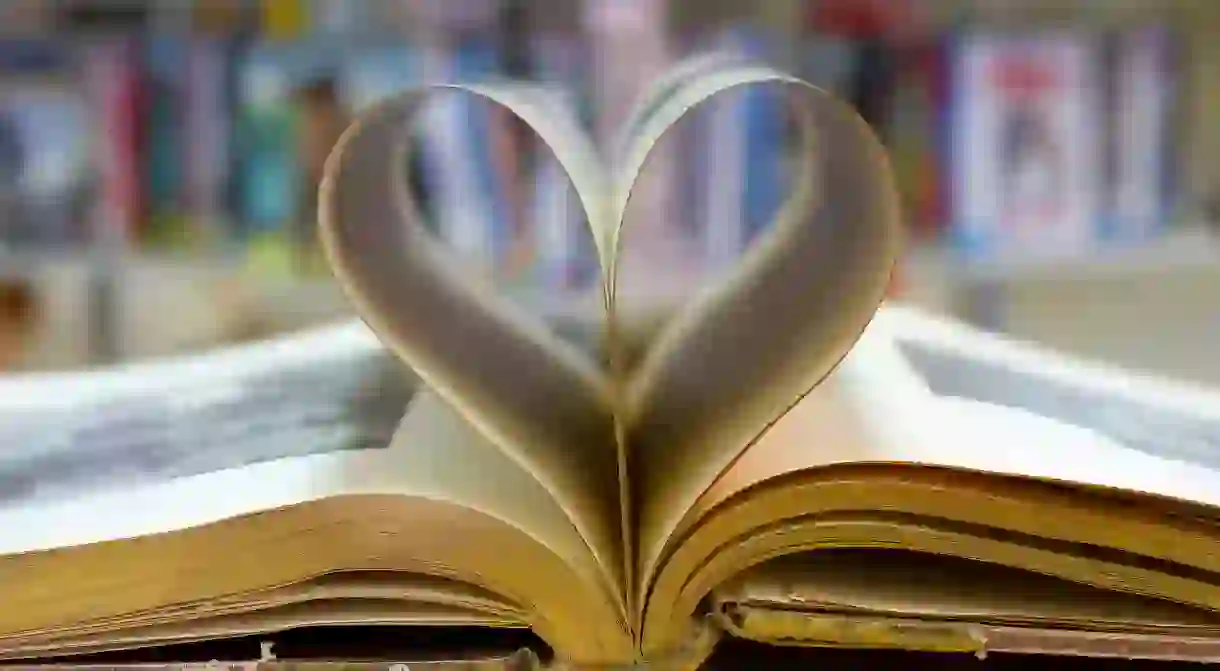A Book Lover’s Guide to Queens

Queens may not (yet) boast the literary pedigree of Brooklyn or Manhattan, but the borough has played a role in the creation of iconic literary work. This list of books, landmarks, shops, and settings will take you to the streets Jack Kerouac stumbled through while he planned On the Road, to the park that sits on the old Moore Homestead where Clement Clarke Moore was inspired to write the perennial favorite, “Twas the Night Before Christmas,” and to the Sunnyside Gardens setting of the more recent novel by Jonathan Lethem, Dissident Gardens, plus more.
Queens literary landmarks
Moore Homestead Playground
Park
Known as “Broadway Park,” few people know the origins of this Elmhurst city park. Originally home to colonial settler Captain Samuel Moore in the 1600s, his descendant, Clement Clarke Moore, wrote the poem “A Visit From St. Nicholas” in the early 1800s. The apple orchard and family estate that once stood here was Moore’s inspiration for the house in which “not a creature was stirring, not even a mouse.” These days, there’s a lot more action than St. Nick and his reindeer at this concrete park, popular with locals for its handball and basketball courts, multi-age playground areas, and chess tables that attract scores of older men crowding around to watch intense matches.
Jack Kerouac’s Ozone Park Home
Building
Upstairs from what is now a dance studio for young children lies what used to be the apartment that Jack Kerouac lived in with his parents from 1943–1949. It’s also where he wrote his first book (The Town and the City) and planned his iconic cross-country novel, On the Road. Catty-corner from the house, across the eight-lane Cross Bay Boulevard, is a pub (most recently Glenpatrick’s Pub) where Kerouac would drink teapots filled with beer alongside William Burroughs and Allen Ginsberg. As you walk back up the boulevard to catch the A train at Rockaway Boulevard, pause for a moment and consider that Kerouac, dubbed the “Wizard of Ozone Park” by Ginsberg, began the journey depicted in On the Road at that very subway station.
The Ramones Mural
Memorial
When you think of Forest Hills, you may not think “birthplace of punk rock,” but indeed it is. The kids who’d become the singer-songwriters of the famous punk band The Ramones grew up in the neighborhood and met at Forest Hills High School. Today, the intersection in front of the school (67th Avenue and 110th Street) has been renamed “The Ramones Way.” Nearby, artist Ori Carino painted a mural in honor of the band on the wall of a garage ramp to the Thorneycroft Apartment complex on 66th Avenue near 99th Street. This is where, in the 1960s and ’70s, the boys used to hang out, experiment with drugs, and dream up the first lyrics that would go on to become the biggest American punk album in history. For more of The Ramones’ shenanigans in Queens, read Dee Dee Ramone’s autobiography, Lobotomy: Surviving the Ramones.
Queens literary settings
The Great Gatsby: Flushing Meadows Corona Park
Park, Zoo, Museum

The Changeling: Forest Park
Park

Five-hundred acres of forest in New York City sounds just as fantastical as the premise of Victor LaValle’s novel, The Changeling, but it’s true. Queens’ sprawling Forest Park may not house any Norwegian trolls (that we know of), but it is the future home of the “QueensWay,” a community-led project to transform abandoned train tracks into a linear park. Visitors can make use of several other attractions including bridle paths (and horses for hire), a bandshell for live events and entertainment, and a historic (and operational) carousel, built at the turn of the last century.
We Are Not Ourselves: Donovan’s Pub
Bar, Gastropub, Pub, Pub Grub

Dissident Gardens: Sunnyside Gardens Park
Park
Located in one of the most successful planned communities in the United States, this members-only park in Sunnyside, Queens, is one of only two exclusive parks in New York City (the other being Gramercy Park). It is the crowning glory of the Sunnyside Gardens historic neighborhood, where Rose Zimmer’s apartment can be found in Dissident Gardens, and which Jonathan Lethem writes is “the Socialist Utopian village of the outer boroughs.” Come and visit the park during one of the events open to the public, including Shakespeare in the Park, carnivals, flea markets, and Oktoberfest festivities, or stroll through the London plane-lined streets that comprise the Gardens and bask in the English cottage feel of the town-like area.
Queens bookstores
The Astoria Bookshop
Bookstore
Kew & Willow Books
Bookstore
Kew & Willow opened in 2017 in response to a lack of bookshops in Queens. Three former Barnes and Noble employees led the community-funded project after the last of the chain’s locations in the borough shut down. The women raised $72,000 to open the business’s doors, and have since been providing a sorely needed service to the central Queens area. Kew & Willow carries a full range of books but takes special care to support and spotlight local authors and their publications. Down the block, Kew Gardens Cinema is a classic art house theater that regularly shows the best independent and foreign films on the market.
Librería Barco de Papel
Bookstore

Hidden on a side street south of the elevated 7 train along Roosevelt lies Librería Barco de Papel, the only Spanish-language bookstore left in all of New York City. Often buried behind rows of books for sale that have spilled out from inside the tiny shop, you’ll know it by the mural of Colombian author Gabriel García Márquez in the window. Not just a jam-packed bookshop of new, rare, and used Spanish books, Barco de Papel (which translates to “Paper Boat”) also serves as a cultural center for local Latinx writers, poets, and musicians to share their art with the local (largely Latinx and Latin American) community.













